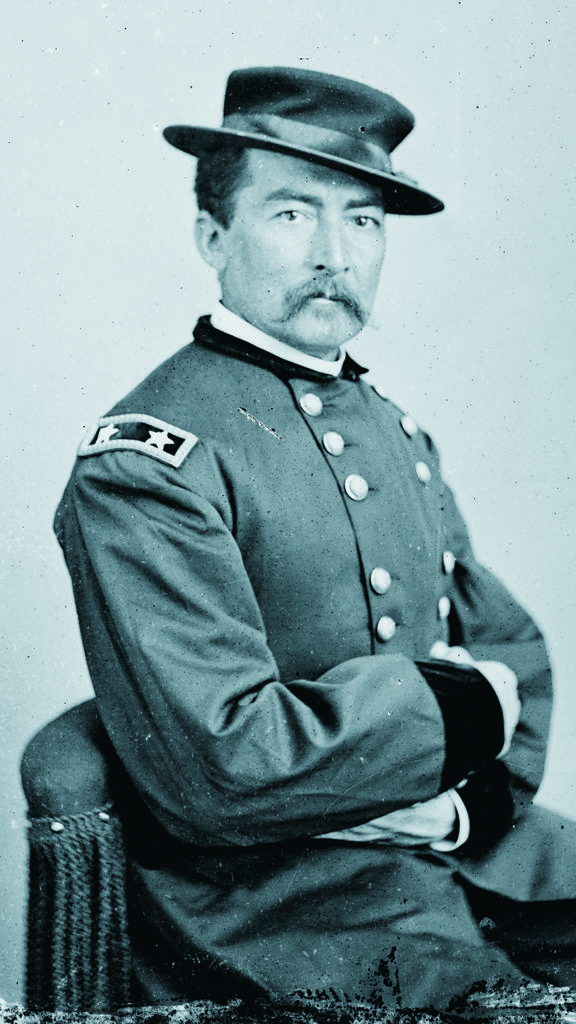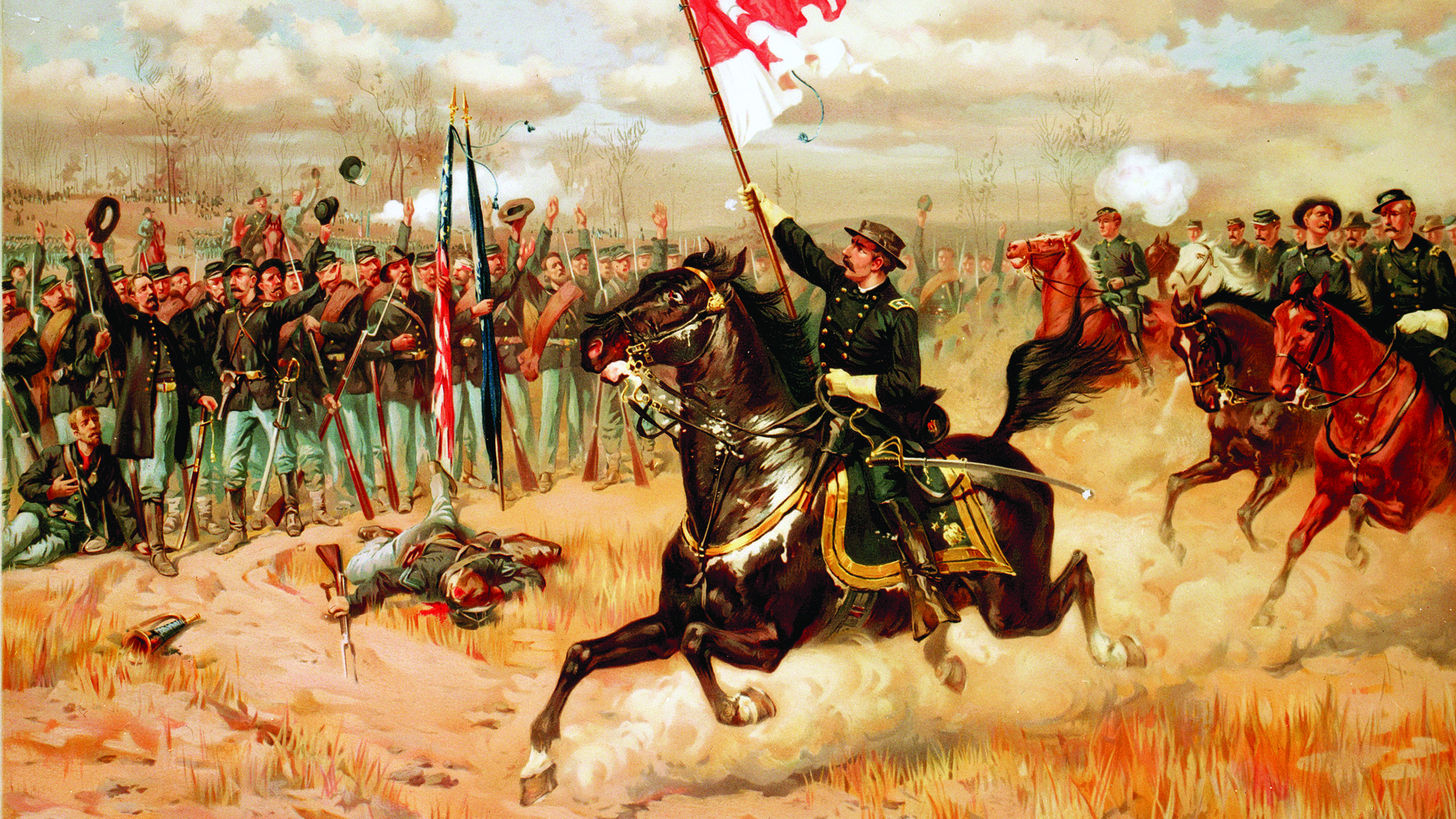ABRAHAM LINCOLN SPOKE TO A CROWD on October 21, 1864, about news from the Shenandoah Valley, proposing that they “give three hearty cheers for Sheridan.” The next day, Maj. Gen. Philip Henry Sheridan, architect of several victories that just culminated at Cedar Creek on October 19, received a message from the president. “With great pleasure,” wrote Lincoln, “I tender to you and your brave army, the thanks of the Nation, and my own personal admiration and gratitude, for the month’s operations in the Shenandoah Valley….” Shortly thereafter, William Tecumseh Sherman acknowledged how success in the Valley had boosted Sheridan’s reputation: “Grant, Sheridan & I are now the popular favorites.”
In the December 2014 issue of Civil War Times, I contrasted the performances of “Stonewall” Jackson and Jubal A. Early in their Shenandoah campaigns of 1862 and 1864, a piece that included a few observations about Sheridan. Here I want to assess more closely the Federal commander’s actions against Early in 1864.

Ulysses S. Grant assigned Sheridan three major tasks—clear Confederate forces from the lower Valley, destroy the region’s capacity to send food and other materials to Lee’s army, and disrupt the Virginia Central Railroad, which crossed the Blue Ridge Mountains between Staunton and Charlottesville and connected with the Orange & Alexandria line in the Piedmont.
Sheridan commenced his offensive on September 19 and within a month extinguished any credible Confederate military threat in the lower Valley. Victories at Third Winchester on the 19th, Fisher’s Hill three days later, and Cedar Creek, each of which ended with flanked Confederates in full retreat, demonstrated that Sheridan could thrash the Rebels seemingly at will. He did equally well with Grant’s second task, laying waste to large stretches of the Valley between Staunton and the Potomac River as well as to much of the Luray Valley east of the Massanutten Range.
The third of Grant’s goals, disruption of the Virginia Central, went unmet. After driving Early well up the Valley after Third Winchester and Fisher’s Hill, Sheridan seemed positioned to disrupt the railroad and move across the Blue Ridge toward Charlottesville and Gordonsville. But in a message to Grant on October 12, he objected “to the opening of the R. R. and an advance on the old Rapidan line, on account of the waste of fighting force to protect R. Rds, and the additional waste of force, as some would have to be left in this valley.” In the end, Grant did not press the issue and continued to see Sheridan as “one of the ablest of Generals.”
Numbers admittedly played a crucial role in Sheridan’s success. His army benefited from an edge over Early’s of at least 2-1 and sometimes nearly 3-1. In later accounts, Confederates habitually inflated Union strength and undercounted their own. Sheridan did the opposite in his memoirs. “The Confederate army at this date was about twenty thousand strong…,” he observed of the campaign’s first phase, and the “force that I could take with me into the field at this time numbered about 26,000 men.” Although clearly disingenuous in this reckoning, Sheridan came closer to the truth than did Grant. The commanding general’s memoirs advanced the unsupportable claim that each side initially fielded about 30,000 troops. Only “the superior ability of the National commander over the Confederate commander,” remarked Grant in a clear jab at Early, brought Union success.
Accepting preponderant numbers as a starting point, a fair estimate of Sheridan’s leadership in the Valley yields far more positive than negative factors. The Army of the Shenandoah boasted the highest percentage of mounted units in any major U.S. force, and Sheridan coordinated cavalry operations with those of his infantry and artillery as well as any army commander during the war. Not content to have cavalrymen screen his movements and seek out the enemy, he repeatedly employed their repeating firepower to break Confederate infantry. This use of infantry and cavalry at Third Winchester and Cedar Creek represented a unique feature of the 1864 Valley campaign.
Sheridan’s personal behavior in battle also produced striking results. His dramatic presence rallied Federals at Third Winchester, and his ride along the lines before the climactic assault at Cedar Creek greatly inspired the men. When Sheridan appeared on the field, wrote a Federal surgeon shortly after Cedar Creek, “his arrival infused new courage into our soldiers….he remarked that ‘Early should that day get the damndest thrashing he ever got.’” A soldier in the 29th Maine Infantry agreed that “our Brave Sheridan wrung a great victory from the very jaws of defeat[.]… He rode right on the field told the boys they wasn’t half whipped Turned on the Rebels drove them from our works way beyond fishers Hill[.]”
Sheridan did suffer tactical lapses. He sent the 6th and 19th Corps through the Berryville Canyon at Third Winchester on a single road, where they predictably became bogged down, and left the 8th Corps far behind without orders before committing it to action. At Fisher’s Hill, he exhibited a poor grasp of terrain by suggesting an assault against Early’s well-protected right flank astride the Valley Pike. George Crook proposed a movement around the Confederate left, where a thin line of dismounted cavalry posed the weakest of obstacles. Sheridan embraced Crook’s idea and implemented it on September 22—then, much to Crook’s displeasure, claimed credit for the tactical success.
Overall, Sheridan proved himself a skilled officer who implemented most of Grant’s strategic design and helped re-elect Lincoln. He relied on preponderant strength to overcome tactical mistakes as well as to deliver powerful blows. Although he never devised a plan equal to Early’s surprise attack at Cedar Creek, his soldiers and Northern newspapers generally credited him for all triumphs, often slighting his subordinates. A major general’s commission in the Regular Army gave tangible expression to gratitude from military and civilian superiors. More than that, Sheridan’s Shenandoah Campaign placed him behind only Grant and Sherman in the Union pantheon, and he followed them as the third general to wear four stars in the U.S. Army.
This story appeared in the December 2019 issue of Civil War Times.





